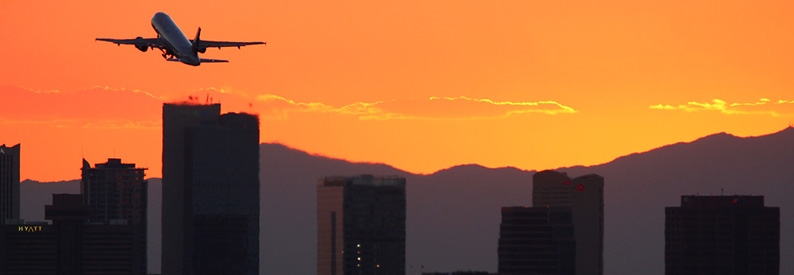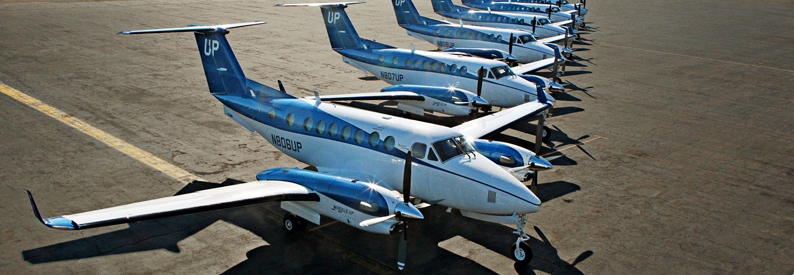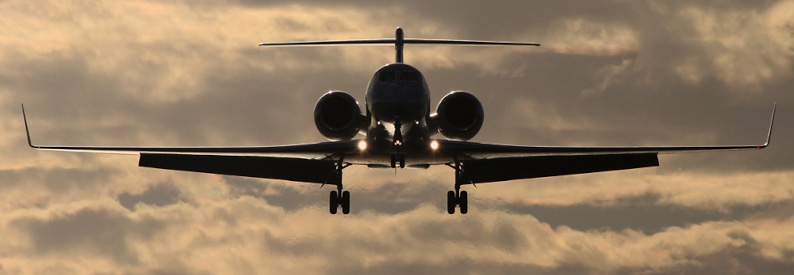Atmospherica Aviation (AAN, Prague Václav Havel) plans to renew and expand its fleet of Embraer Executive Jets with two more Phenom 300Es due next year - one of which could be for growth - as well as more Praetor 600s, chairperson and sales manager Alice Horvath-Muska told ch-aviation in an exclusive interview.
"We have four Phenom 300s, two more on order. They will arrive in the third quarter of 2025. We now also have the brand new Praetor 600. We will operate it for two to three months to see whether it fulfils the business plan we've set, and if yes, it will not stay alone in the fleet. It's much more effective to have more units of each aircraft type," she said.
One of the two firm-ordered Phenom 300Es will replace the oldest Phenom 300 in the operator's fleet, namely OK-PHM (msn 50500445), which was manufactured in 2018. The second one will either replace one of the 2021-built aircraft or be for growth.
Fleet commonality is an important part of the airline's business. It simplifies maintenance and parts stockpiling, crewing, and allows the airline to minimise ferry times, flexibly deploying aircraft depending on their current location. With a fleet of similar aircraft, Atmospherica Aviation can also recover its own AOG events and reduces the need to charter third-party aircraft in such cases. For this reason, it aims to grow the Praetor fleet beyond one aircraft after the initial proving period.
The newly inducted Praetor 600 replaced the carrier's previous midsize jet, a Challenger 300. While brand new, the aircraft was taken over from another customer that did not take it. Horvath-Muska said that Atmospherica owns all of its available aircraft and plans to continue doing so, which means growing the Praetor 600 fleet will be a big investment.
"The goal is to buy new aircraft directly from Embraer. But if you want to buy a new one, the delivery wait now is 2.5 years. So we will see regarding the next Praetor. If we want to have it again as soon as possible, let's say until summer next year, we will have to buy it on the market again. But once our Praetor fleet is stabilised, then we can start this cycle that we already have set up with the Phenoms - we can order new ones from Embraer to replace the older ones. This is definitely our goal and what we prefer to do," she explained.
Atmospherica Aviation plans to keep replacing its aircraft after approximately six years of service.
The operator has no plans to expand to larger aircraft with longer range as it would force it to change its operating model too much. Horvath-Muska said that operations across the Atlantic would be too much for Atmospherica at the current stage.
Besides the Embraers, Atmospherica Aviation also operates one Citation Mustang, but this aircraft is only used for the company's internal needs and by the owner. The company could add more types to its certificate under management contracts, but if the operated aircraft were similar to the existing fleet, it would have to be managed in a way so that it does not cannibalise the charter fleet. "But in the end any agreement is thinkable," Horvath-Muska said.
Market variations
Horvath-Muska highlighted that the small and midsize jets are particularly well-suited to the European market where customers are focused on availability, flexibility, and privacy rather than cabin size and luxury.
"You get the service you demand from flying private, but still for a reasonable price. You have very different types of clients - that's why, for example, in Dubai, the Middle East or, before the war, also Russia, the Phenom would not be the most interesting product. We already tried it out with the Phenom, basing it for one month in Dubai, but it did not work there," she outlined.
The Praetor 600 promises to be a very appealing aircraft thanks to "the cost structure of a super-midsized jet and the range of a heavy jet," she said. While it will be, for now, the only aircraft in this size category in Atmospherica's fleet, the operator is not new to midsize jets. It operated two Hawker 900XPs until 2023 (one for 11 and the other for five years) and the single Challenger 300 for seven years until August 2024.
Atmospherica Aviation operates a floating fleet and its aircraft are not permanently based at any given airport. The operator performs deep inside and outside cleaning of the aircraft around every 10 days at Prague Václav Havel airport, but Horvath-Muska said it is trying to utilise "organic" flight patterns rather than ferry the aircraft back just for the necessary procedures. The company aims to minimise ferry flights and will only occasionally reposition aircraft from airports where demand for charters is lower.
The operator has no in-house Part 145 maintenance nor plans to enter this segment.
Aeropolitical environment
The closure of the Russian and Ukrainian markets following the 2022 full-scale invasion and the more recent start of the Israel-Hamas war in Gaza have impacted Atmospherica Aviation's operations. Even though Russian charter customers prefer larger aircraft, they were still a sizeable customer group for the Czech operator's small jets in the past. Ukraine was a smaller market, but the closure of its airspace indirectly affected the operator, extending flight times to some other destinations. This was particularly problematic for the larger Challenger 300, an aircraft better suited to the Middle Eastern market. However, given the Praetor 600's much longer range, this will no longer be a problem once the new type is in service.
The Gaza war caused significant safety and security issues. Horvath-Muska said that even though the airline could technically fly to Israel and Lebanon, it decided not to out of concerns for crew safety. The rampant GPS spoofing and jamming in the region made operations with Phenom 300s complicated, as small jets are particularly vulnerable to such disruptions and can now only operate in daytime and good weather at particular airports. Horvath-Muska said the Praetor 600 is much more resilient to spoofing due to advanced avionics.
In the European Union, the operator faces growing environmental pressure on the segment. Horvath-Muska said the problem is not the cost of emissions itself but the unfair application. She criticised the EU threshold, which absolves operators emitting less than 10,000 tonnes of carbon dioxide per year from the EU Emission Trading System. Those who cross the threshold have to pay for all emissions, starting from the first tonne. As a result, operators emitting just below the limit have significantly lower costs than those that cross by just a few tonnes, while in reality the companies can be practically the same size.
"I want to state clearly that I am absolutely in favour of paying for emissions. The problem is that with just one additional aircraft, you get over the threshold and have to pay for the emissions for the whole fleet. With our current fleet, we're already so close to the limit that we'll have to find a solution. We will see if it will be another AOC. But I hope that politicians will solve it for us, that the rule will change so that everyone pays from zero emissions and it will be a competitive market," Horvath-Muska argued.
She emphasised that Atmospherica Aviation, on its own, has no business plans to obtain another AOC and is comfortable with its Czech certificate.
Thus far, the operator has organically stayed under the 10,000-tonne limit but will likely cross it once the Praetor 600 is in service.






